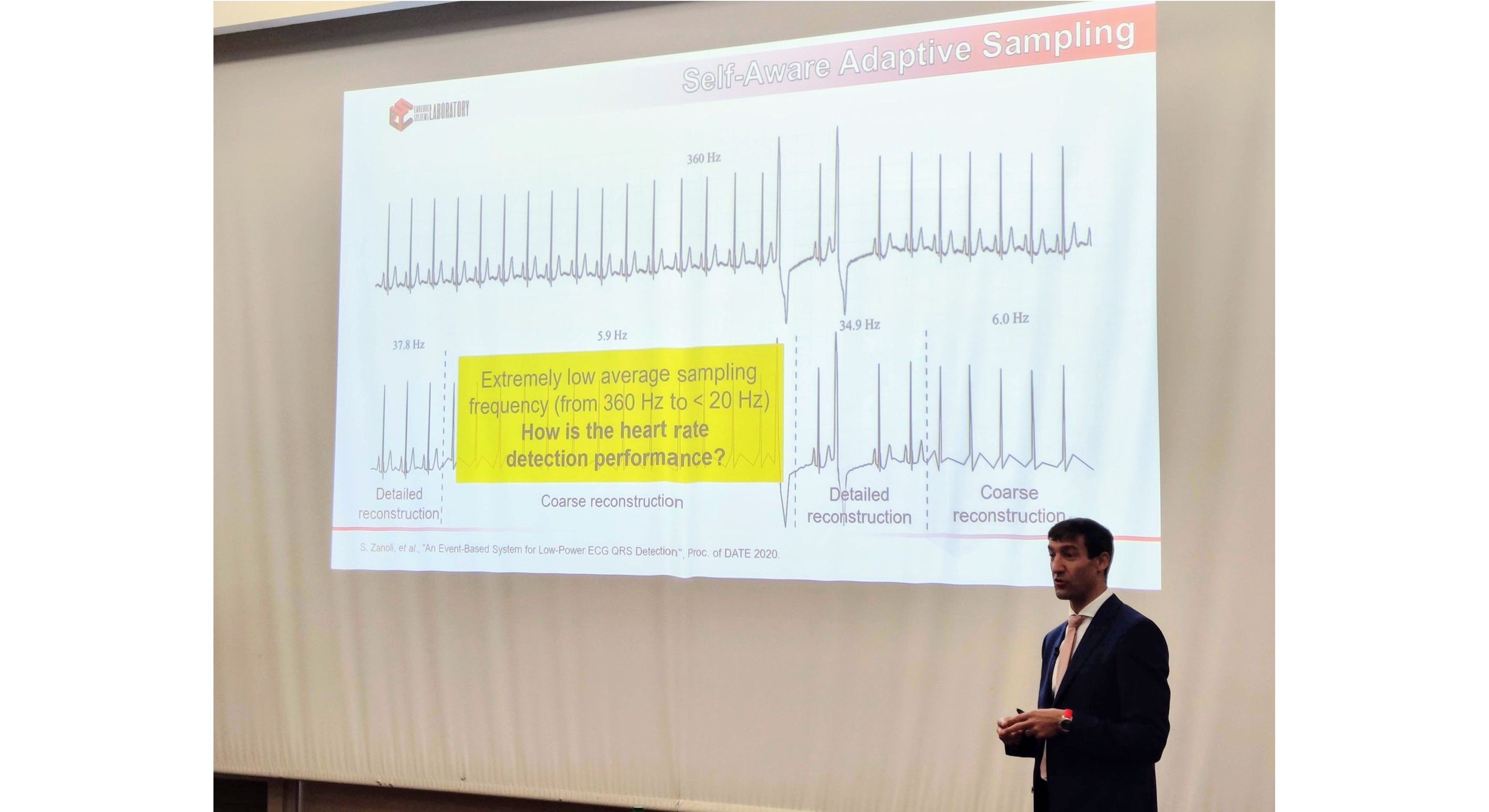Brain-Inspired Edge AI Computing Architectures for Smart Objects and Wearables in the IoT Era
The Internet of Things (IoT) has been hailed as the next frontier of innovation in which our everyday objects are connected in ways that improve our lives and transform industries. However, major challenges remain in achieving this potential. The key aspects are the inherent complexity of designing energy-efficient IoT architectures to provide onboard processing capabilities where data is gathered (edge computing) for many different applications, often resulting in degraded and unreliable behavior and a short lifetime.
In this talk, Prof. Atienza first presented the challenges of ultra-low-power (ULP) computing systems design and communication overhead in next-generation IoT devices in the context of Big Data processing, particularly for smart wearables in healthcare. Then, the benefits of exploiting the latest knowledge of how mammalian brains operate to conceive future edge Artificial Intelligence (AI) enabled architectures were discussed. These new edge AI computing architectures must be heterogeneous hardware systems, including energy-scalable software layers that trigger the activation of components by event-driven techniques. As a result, the next-generation edge AI architectures will be able to gracefully adapt the energy consumption and output precision according to their available energy at each moment in time.
Some of the takeaways:
- monitoring long-term conditions is becoming more important with an ageing population, but no one wants to be laden down with wearables that are bulky and/or stigmatizing
- neurons respond to events and are idle the rest of the time. Can we get edge devices to do the same?
- reducing the data sensing/sampling cost results in greater efficiency. Driven by biosignals’ properties, sampling can be dynamically tuned for specific patients
- in the brain, memory and computing is in the same place. David’s team worked with Luca Benini’s team at ETH Zürich to integrate an architecture with InMemory computing into a PULP processor. Check out the BLADE (BitLine Accelerator for Devices on the Edge) paper here 👉 https://bit.ly/BLADE_EPFL

